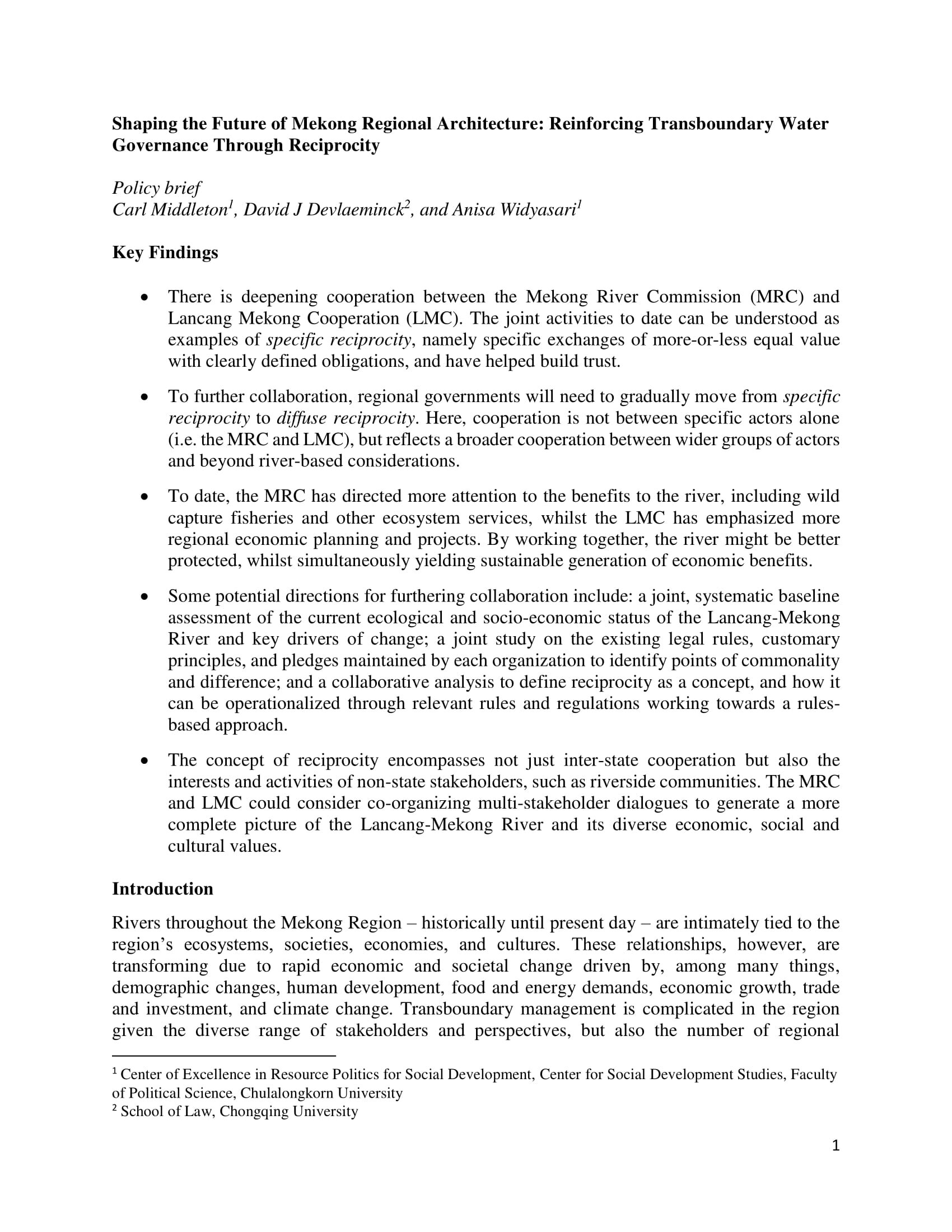POLICY BRIEF: Shaping the Future of Mekong Regional Architecture: Reinforcing Transboundary Water Governance Through Reciprocity
/Publication date:
June 2019
Publication:
Shaping the Future of Mekong Regional Architecture: Reinforcing Transboundary Water Governance Through Reciprocity
Download the policy brief here.
This policy brief is produced for track 1.5 Mekong Policy Dialogue on evolving sub-regional architecture and the role of Ayeyawady-Chao Phraya-Mekong Economic Cooperation Strategy (ACMECS), co-organized by Department of Foreign Affairs and Trade - Australia (DFAT), The Asia Foundation (TAF), and Center for Social Development Studies (CSDS) . For more information more resources from the dialogue, please visit this link here.
Authors:
Carl Middleton, David J. Devlaeminck, and Anisa Widyasari
Key Findings
There is deepening cooperation between the Mekong River Commission (MRC) and Lancang Mekong Cooperation (LMC). The joint activities to date can be understood as examples of specific reciprocity, namely specific exchanges of more-or-less equal value with clearly defined obligations, and have helped build trust.
To further collaboration, regional governments will need to gradually move from specific reciprocity to diffuse reciprocity. Here, cooperation is not between specific actors alone (i.e. the MRC and LMC), but reflects a broader cooperation between wider groups of actors and beyond river-based considerations.
To date, the MRC has directed more attention to the benefits to the river, including wild capture fisheries and other ecosystem services, whilst the LMC has emphasized more regional economic planning and projects. By working together, the river might be better protected, whilst simultaneously yielding sustainable generation of economic benefits.
Some potential directions for furthering collaboration include: a joint, systematic baseline assessment of the current ecological and socio-economic status of the Lancang-Mekong River and key drivers of change; a joint study on the existing legal rules, customary principles, and pledges maintained by each organization to identify points of commonality and difference; and a collaborative analysis to define reciprocity as a concept, and how it can be operationalized through relevant rules and regulations working towards a rulesbased approach.
The concept of reciprocity encompasses not just inter-state cooperation but also the interests and activities of non-state stakeholders, such as riverside communities. The MRC and LMC could consider co-organizing multi-stakeholder dialogues to generate a more complete picture of the Lancang-Mekong River and its diverse economic, social and cultural values.


